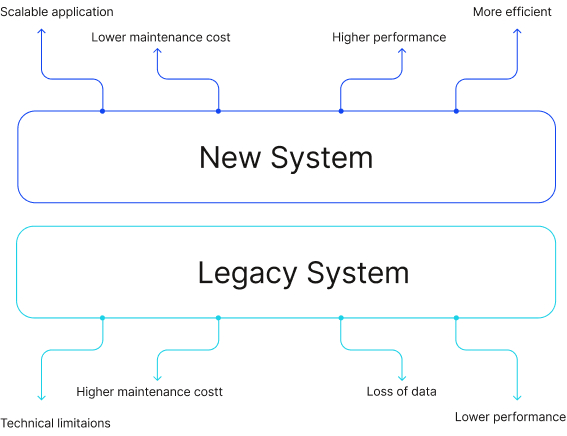Maximizing Operational Efficiency: OEE's Impact Across the Company
Blog
4 Min Read
Anyone in the operations department is used to looking at numbers every day. But experienced executives can use those numbers and see beyond, to gain insight into where your plant thrives and where it falters. One of the best ways to do that is to take advantage of the information made available by the Overall Equipment Effectiveness (OEE), a powerful metric that can help you understand your plant’s performance and make better data-driven decisions.
OEE, or Overall Equipment Effectiveness, plays a pivotal role in assessing production efficiency by offering a holistic perspective on various operational aspects. It encompasses three fundamental components: availability, performance, and quality, providing a thorough evaluation of equipment utilization and performance.
You can learn more about the basics of OEE at our blog Understanding OEE.
In this blog, let’s delve into how OEE influences the entire company, from the boardroom to the shop floor.
Understanding the numbers
At its core, OEE measures the efficiency of manufacturing operations by comparing actual production output to the maximum output possible under ideal conditions. But it’s more than a simple percentage: the numbers can give you insights into the production line, revealing where losses occur and where improvements can be made. Whether it’s investing in new equipment, enhancing training programs, or refining processes, every decision is grounded in data-driven analysis.
Harnessing Insights Across Departments
The impact of OEE reverberates across departments, each playing a vital role in the quest for operational excellence.
- Engineering: Armed with a deep understanding of OEE’s nuances, engineers identify bottlenecks and inefficiencies, paving the way for targeted investments in machinery and technology.
- Maintenance: By tracking downtime and identifying recurring issues, maintenance teams can proactively address equipment failures, minimizing disruptions and maximizing uptime.
- Production Supervisors: Variations in performance between different crews shed light on training needs and best practices. Establishing gold standards and sharing knowledge across teams ensures consistency and efficiency.
- Quality Control: OEE uncovers the true cost of quality issues, guiding quality control efforts towards mitigating defects and optimizing product integrity.
Implementation: From Insight to Action
The real power of OEE is found in its application rather than in its computation. Decision-makers are able to design a plan of action to alleviate specific problems. Every project, whether it’s improving supply chain logistics, investing in training, or optimizing operations, is based on a thorough understanding of the underlying reasons of inefficiency.
OEE becomes a lighthouse in the never-ending quest for operational excellence, pointing businesses in the direction of productivity and profitability. It is more than just a statistic; it is a driver of revolutionary change, enabling departmental stakeholders to work together toward a common objective.
Ready to boost your manufacturing operations? Embrace MES and unlock the full potential of your production capabilities. Let’s start your transformative journey and pave the way for smarter and more efficient manufacturing. Get in touch to start your Digital Transformation Journey.

Agile MES: The Key to Unlocking Smart Manufacturing Success
MES is a computerized system used in manufacturing operations to track and document the transformation of raw materials into finished goods. An MES system typically manages and monitors work orders, equipment, materials, and personnel on the shop floor. The system provides real-time visibility into production processes, helps optimize manufacturing operations, and improves the overall efficiency of the manufacturing process.

Understanding OEE: The Key to Manufacturing Efficiency
In today’s competitive manufacturing landscape, improving efficiency and productivity is crucial for businesses to remain competitive. One of the key metrics used to measure manufacturing efficiency is OEE or Overall Equipment Effectiveness. In this blog, we will take a closer look at OEE and its importance in manufacturing.

How to Effectively Conduct a Legacy System Integration
Legacy system integration can be a daunting task, but it’s a necessary one for many manufacturers that rely on outdated systems to run their business. Integrating legacy systems with modern technology can improve efficiency, streamline processes, and save time and money. However, it’s important to approach the integration process carefully and methodically to ensure success.
Share on :
Keep On Reading
Subscribe to Our Newsletter
Subscribe to our weekly newsletters to get updates regarding our new production, behind the scene process of our art creation and much more.
After submitting this form you will receive an e-mail with a confirmation link that you must click to complete your request. Detailed information on processing and cancellation can be found in our privacy policy.

